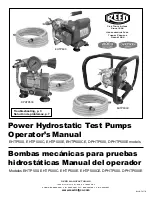
Procedure
1. Remove the protective cap from the vacuum connection.
2. Establish the shortest possible pipeline between vacuum pump and vacuum chamber.
3. Choose a minimum diameter equal to the nominal diameter of the vacuum connection.
4. Depending on the pump type, use PVC or metallic hoses with flange connections from the
5. Support or suspend the piping to the vacuum pump so that no piping system forces act on the
vacuum pump.
6. Use a separator or filter from the Pfeiffer Vacuum line of
7. Connect the vacuum pump to the vacuum system using the vacuum connection.
5.3 Connecting the exhaust side
CAUTION
Danger of injury from bursting as a result of high pressure in the exhaust line
Faulty or inadequate exhaust pipes lead to dangerous situations, e.g. increased exhaust pressure.
There is a danger of bursting. Injuries caused by flying fragments, the escaping of high pressure, and
damage to the unit cannot be excluded.
► Route the exhaust line without shut-off units.
► Observe the permissible pressures and pressure differentials for the product.
► Check the function of the exhaust line on a regular basis.
Installation and operation of accessories
Pfeiffer Vacuum offers a series of special, compatible accessories for its rotary vane
pumps.
● You can find information and ordering options for approved
● Described accessories are not included in the shipment.
Condensate separator
Pfeiffer Vacuum recommends installing a condensate separator, with condensate drain at
the lowest point of the exhaust line.
Procedure
1. Remove the protective cap from the exhaust connection.
2. Choose a minimum diameter for the exhaust line at least equal to the nominal diameter of the ex-
haust connection.
3. Depending on the pump type, use PVC or metallic hoses with flange connections from the
4. Route the piping downwards from the vacuum pump, to prevent condensate return.
5. Support or suspend the piping to the vacuum pump so that no piping system forces act on the
vacuum pump.
6. Use a separator or filter from the Pfeiffer Vacuum line of
5.4 Filling the operating fluid
WARNING
Danger of poisoning from toxic vapors
Igniting and heating synthetic operating fluid generates toxic vapors. Danger of poisoning if inhaled.
► Observe the application instructions and precautions.
► Do not allow tobacco products to come into contact with the operating fluid.
Installation
23/52
















































